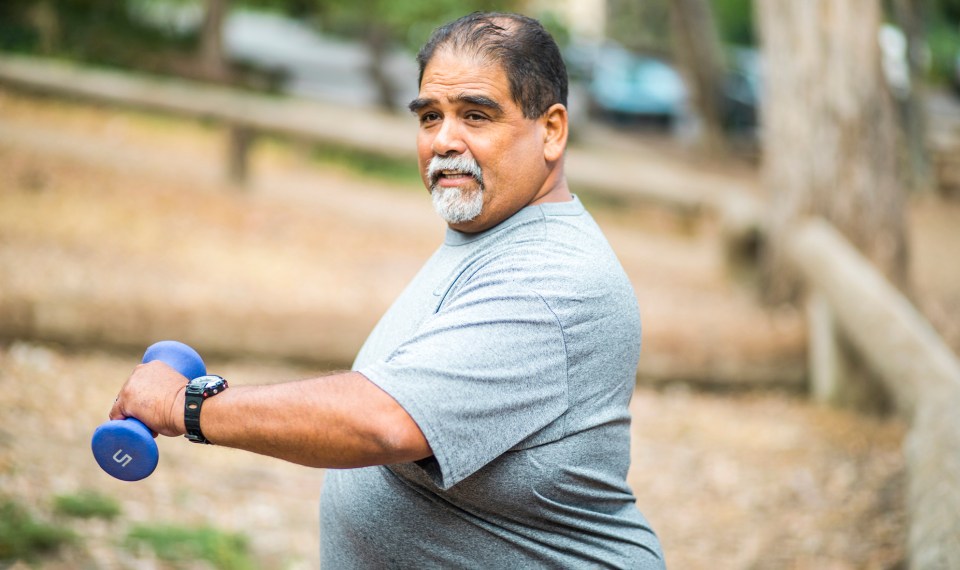Diabetes is a chronic condition that occurs when your body doesn’t make enough insulin or doesn’t use it effectively. It causes your blood sugar level to rise, leading to serious health issues including heart disease, vision problems and kidney disease.
There are a variety of ways to manage diabetes, from medications to diet, as well as exercise. It is hard to overstate the importance of exercise for diabetes management, especially for those with type 2 diabetes. Exercise helps with weight control, naturally lowers blood pressure, reduces cholesterol and triglyceride levels, boosts mood, and builds bone and muscle strength. It also lowers blood glucose and increases the body’s sensitivity to insulin.
What are the Different Types of Diabetes?
There are three different types of diabetes:
- Type 1 diabetes. Scientists believe this is likely caused by an autoimmune reaction that causes the body to attack itself. The body ceases to make insulin. Only 5-10% of diabetics have type 1 diabetes.
- Type 2 diabetes. This type of diabetes is more common in adults because it develops slowly, over years. It occurs when your body doesn’t use insulin properly, causing blood sugar levels to rise. Approximately 90-95% of those with diabetes have type 2.
- Gestational diabetes. This develops in pregnant women who have never had diabetes. It typically disappears after your baby is born but can increase your risk for developing type 2 diabetes over time.
Aerobic Exercise and Diabetes
Aerobic exercise uses oxygen to sustain the body’s activity level. Performing physical activity that increases your breathing and heart rate can lower blood glucose levels while you are exercising and for up to 24 hours afterwards.
Moderate to intense levels of aerobic activity significantly lower the risk of death due to heart and blood vessel issues, as well as overall mortality risks. Long-term aerobic exercise also increases the body’s ability to process glucose.
According to the research from the American Diabetes Association, aerobic exercise for those with type 1 diabetes increases cardiorespiratory fitness, decreases insulin resistance, improves lipid levels and boosts endothelial (cells lining blood vessels) function.
If you have type 2 diabetes, regular aerobic exercise reduces A1C, triglycerides, blood pressure and insulin resistance.
Types of aerobic exercises include:
- Walking. Just 30 minutes of walking, five times a week can be beneficial for those with diabetes. Maintain a brisk pace and build slowly, if needed.
- Dancing. Great for those who enjoy this type of exercise, dancing is good for developing flexibility, lowering blood pressure and reducing stress.
- Swimming. This aerobic exercise is beneficial for burning calories without putting stress on the joints. Aim for 10-minute sessions three times a week and increase as tolerated.
- Yoga. This gentle stretching exercise improves flexibility, strength and balance.
- Tai Chi. A low impact exercise, tai chi is a Chinese martial art that helps build and maintain balance, strength and flexibility. Depending on the speed and movements, it can be an aerobic workout.
- Biking. Build heart and lung strength as well as control blood pressure, weight and triglyceride levels with a cycling routine. If you are not comfortable biking outdoors, consider using a stationary bicycle.
Anaerobic Exercise
Anaerobic exercise, a more intense form of exercise, forces the body to use energy sources stored in the muscles. This type of exercise increases skeletal muscle glucose uptake, improves insulin sensitivity, and aids in glycemic control in type 2 diabetes. It also increases muscle strength and boosts fat loss, which can lead to better blood glucose control.
Although anaerobic exercise is appropriate for many with diabetes, it is important to talk to your healthcare provider before starting an anaerobic exercise routine. Start gradually and build the intensity slowly over time. Remember to stay hydrated and monitor blood sugar levels closely before and after exercising.
Examples of anaerobic exercise include:
- High-intensity interval training (HIIT). Rather than a specific type of exercise, HIIT can be applied to any type of cardio workout. It involves working out at a high intensity level for a short period of time. A good ratio is raising the intensity level for anywhere from 30 seconds to 3 minutes, slowing down to a recovery level for the same time interval, followed by another bout of high intensity exercise. HIIT reduces the time you need to exercise and can be performed at home with any type of cardio workout. It has been shown to have a minimal risk of causing hypoglycemia, but blood glucose monitoring is still recommended.
- Intense strength training or weightlifting. The advantage of strength training is that it promotes muscle building and strength. Since it can cause blood glucose to rise, talk with your physician before starting to see if you need to increase your insulin beforehand. Monitor glucose levels closely.
Combining Aerobic and Anaerobic Exercises
Aerobic exercise makes it possible for you to exercise longer, while anaerobic exercise is more intense and can only be sustained for short periods of time. Mixing the two is beneficial, and, if you exercise regularly, you may not even be aware when you switch from aerobic to anaerobic exercise. For example, during a lively tennis game you may move from aerobic to anaerobic as the pace increases. The combination is a great way to burn fat, and adding anaerobic exercise to your aerobic routine, if you are physically able, can increase the health benefits.
Exercise and Blood Sugar
Physical activity can help lower blood sugar by increasing insulin sensitivity, making your muscle cells better able to use insulin. Exercise can also cause the muscles to contract, which helps cells take up glucose for energy.
Exercise can result in a short-term reduction in blood sugar, and with a regular exercise routine, you can lower your A1C.
Blood Sugar Response to Exercise
Blood glucose may be lower for 24 hours or longer after a workout. Tracking the type of exercise, length of workout, and blood sugar reaction can help you understand your pattern. By learning your body’s response to exercise and diabetes, you will be better able to control your blood sugar and prepare for shifts. Be sure to monitor your blood glucose before and after exercise so that you can prevent blood sugar highs and lows.
If you are on insulin or medication that increases insulin production, you may experience hypoglycemia with exercise. It may be necessary to adjust your insulin dose or carbohydrate intake, so be sure to discuss with your doctor first.
While blood glucose levels usually decrease during exercise, they can also rise. Vigorous anaerobic exercise such as weightlifting or sprinting can cause a release of adrenaline or other stress hormones. This stimulates the liver to release glucose, causing blood sugar levels to rise. Blood glucose may also climb if you consume too many carbs prior to your workout.
The American Diabetes Association recommends the following steps for preventing a rise in blood sugar during or after exercises:
- Stick with moderate aerobic exercise routines or use light weights with high repetitions
- Practice meditation or paced breathing before and during workouts
- Exercise later in the day since blood sugar levels are often highest between 4 and 8 a.m.
- Ask your healthcare provider about adjusting rapid-acting insulin or short-acting diabetes medications before exercising
- Reduce carbohydrate intake before exercise sessions
Benefits of Exercise in Diabetes
- Studies have shown all forms of exercise can help lower A1C if you have diabetes.
- Exercise can reduce the risk of dying due to heart disease if you have diabetes.
- Women with diabetes who performed moderate exercise at least four hours a week were found to have a 40% lower risk of developing heart disease than those who didn’t exercise.
Resources:
- health.harvard.edu/staying-healthy/the-importance-of-exercise-when-you-have-diabetes
- verywellhealth.com/aerobic-exercise-5218112
- healthline.com/health/fitness-exercise/anaerobic-exercise#aerobic-vs.-anaerobic
- diabetes.org/healthy-living/fitness/anaerobic-exercise-diabetes
- diabetesjournals.org/care/article/39/11/2065/37249/Physical-Activity-Exercise-and-Diabetes-A-Position
The content of this site is for informational purposes only and should not be taken as professional medical advice. Always seek the advice of your physician or other qualified healthcare provider with any questions you may have regarding any medical conditions or treatments.



